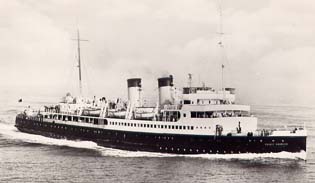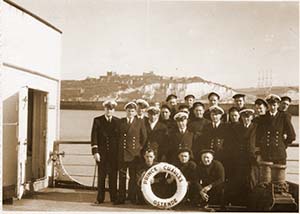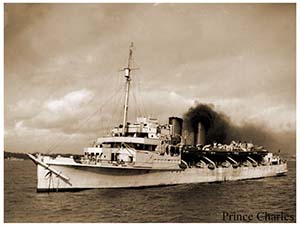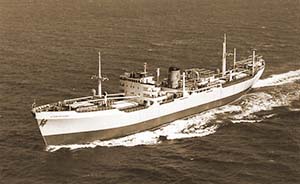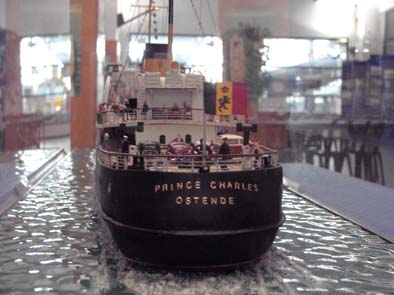De Prince Charles werd in de reeks van vier als zusterschip van de Prince Leopold in 1930 op de werven van Cockerill gebouwd. Het schip had een lengte van 109.60 m en 14.48 m breed. Met zijn 2884 ton en 14000 PK haalde het schip een snelheid van 24.50 knopen.
Op 12 maart 1930 liep het schip te Hoboken van stapel in aanwezigheid van de Prins Charles. Het was het derde turbineschip in de reeks van vier. Het had een buitengewone snelheid en slaagde er zelfs in om op een dag de overvaart in 2 u en 27 minuten te doen.
Het vaartuig werd heel hoog gewaardeerd in Engeland. In 1931 verbleef het 4 dagen met reizigers van de Belgische Zeevaartbond in het hart van Londen tussen Waterloo en Tower Bridge.
Regelmatig werden op het achterdek voertuigen geladen. Deze werden met de kaaikranen aan boord gehesen. Deze kraan werd hiervoor in 1926 op de kaai geplaatst.
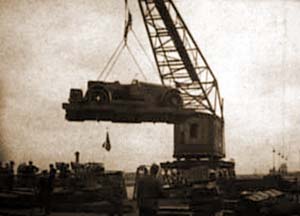
WOII
The Prince Charles deed dienst voor de evacuatie van NW Frankrijk vanaf 29 november 1939 tussen Oostende en Folkestone.
Op 7 januari 1940 kwam zij met een patrouille boot in aanvaring. De patrouille boot was ernstig beschadigd. De Prince Charles had schade opgelopen aan het roer en diende terug te keren naar Oostende voor herstelling.
Na de herstelling is ze op 31 januari teruggekeerd in normale dienst tot 3 mei. Op 18 mei is het schip vanuit Oostende ontsnapt naar Southampton en heeft intensief deelgenomen aan de evacuatie van burgers en troepen in Frankrijk.
De Prince Charles arriveerde op 25 september 1941 in Davenport om tot LSI (Landing Ship Infantry) te worden omgevormd. Men diende hiervoor de bovenbouw weg te halen teneinde de stabiliteit te bekomen om acht landingsvaartuigen en de bijhorende davits te monteren. Het was de bedoeling om aan de operaties deel te nemen. Het schip werd tijdens de proeven echter niet geschikt gevonden en was nog op de scheepswerf te Devonport in de nacht van 29 en 30 april 1942 wanneer de scheepswerf werd gebombardeerd en aan bakboord midden werd getroffen. Hier vielen er vijf gewonden onder de bemanning. Wanneer ze op 23 juni terug vertrok, werd ze opnieuw aangevallen. Deze maal echter zonder schade.
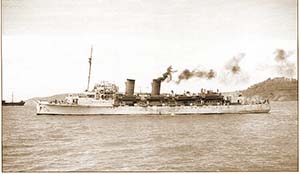
De Prince Charles nam deel aan diverse raids zoals Noorwegen, Sicilië, Salermo en bracht troepen naar verschillende locaties. Op 3 november 1943 keerde ze terug naar Tilbury voor herstellingen aan de boiler room. Meer bepaald aan het metselwerk. Even later in februari 1944 diende ze ook naar Southampton terug te keren voor herstellingen.
In juni 1944 nam de Prince Charles deel aan de aanval op Omaha beach. Daarna vervoerde het schip troepen naar Normandië tot 12 juli tot wanneer ze naar Penarth terug moest voor opnieuw een grondige herstelling van de boiler room. Hier werd ze terug omgevormd voor het vervoer van troepen. Ze verbleef ongeveer 13 maanden in Zuid Wales en vertrok op 6 september 1945 opnieuw voor troepen tarnsport tussen Oostende en Dover.
Op 15 juni 1946 werd de Prince Charles teruggegeven aan de Belgische Staat en kon later op het jaar de normale dienst hervatten.
Aanvaring 19 maart 1953
Het Britse schip Llantrisant (6500 Ton) was op weg van Antwerpen naar Melbourne wanneer deze in de mist in aanvaring kwam met de Prince Chales. De Prince Charles kon nog de reis naar de haven van Oostende maken en de Llantrisant bleek geen ernstige schade te hebben opgelopen.
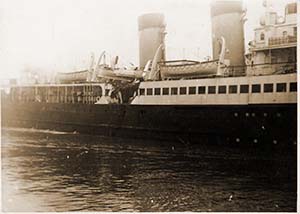
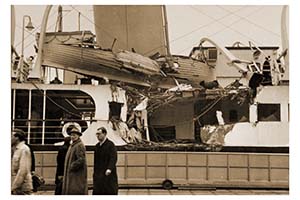
Na 30 jaar dienst werd de Prince Charles in 1960 als schroot verkocht.

